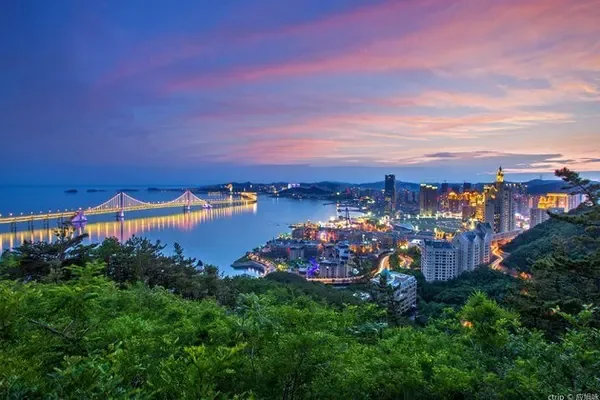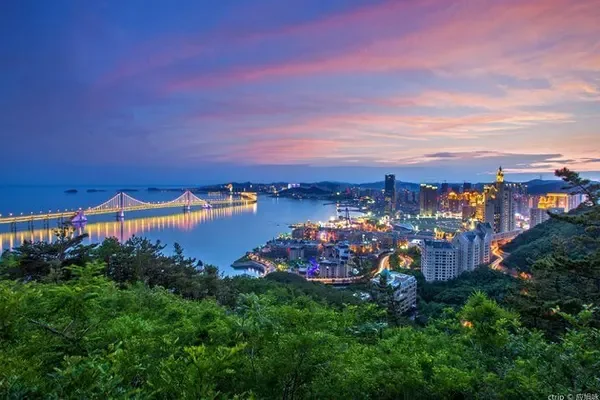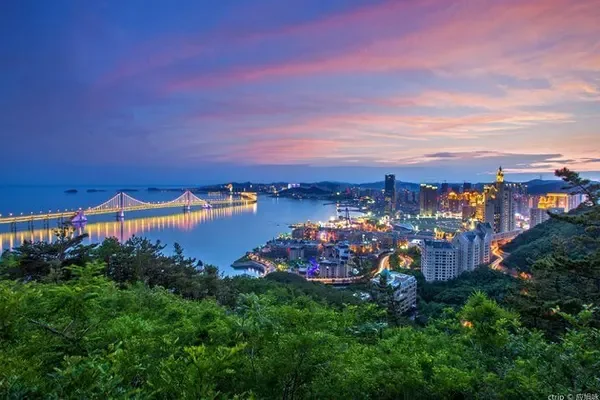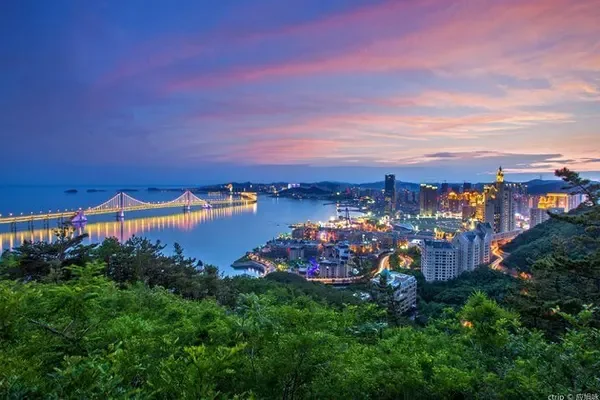On June 2, 2021, four of us self-proclaimed young sixties, started a self-driving trip, Beijing-Tibet.
Preparations for entering Tibet: 1. Except for the team leader, each person should take Rhodiola rosea 20 days in advance.
2. Prepare headache powder, glucose powder, oxygen pillow and purchase oxygen cylinders in case of emergency.
3. Take astragalus, red dates and longan soaked in water throughout the whole process, and supplement with multivitamin tablets every day.
4. The leader brings a full set of photography and video equipment (Canon), and the other three have mobile phones and cameras.
5. You must bring the border passes of Tibet and Xinjiang. (It is best to do it at the departure point)
6. Bring thin down jackets, jackets and a full set of summer and autumn clothes.
7. Replenish instant noodles, food, fruit and purified water in the car at any time.
Route to Tibet: G214 Yushu to Qamdo via Leiwuqi.
Due to the long time and many places and pictures, this travel note is divided into four sections.
Itinerary (1) Transition from plain to plateau (published on July 16, 22)
Itinerary (2) Gradually entering the plateau, Gannan and Qinghai (published on July 24, 22)
Itinerary (3) Tibet Qamdo, Medog, Ngari South Line G219—Yecheng (published on October 14, 22)
Itinerary (4) Xinjiang Desert Highway, Duku Highway, S101 Provincial Highway and return to Beijing via Inner Mongolia G7 (published on November 18, 22)
Itinerary (4) Xinjiang Desert Highway, Duku Highway, S101 Provincial Highway and return to Beijing via Inner Mongolia G7
Hotan, Taklimakan Desert, Kizil Grottoes, Dushanzi Grand Canyon, Duku Highway, S101
Day 35-40, July 6-11 Itinerary and destination: Yecheng - Hotan - Taklamakan Desert - Duku Highway - S101.

On July 5, from the barracks in the thirty miles - O kilometers of the Xinzang line.

Stay in Yecheng and rest for a day.

Arrived in Hotan on July 7. In the light rain, I walked in the People's Square where I had left my footsteps. Once again I saw the large sculpture of Chairman Mao shaking hands with Uncle Kurban. I felt very cordial. The last time I came to Hotan was in July 2018.

On July 8, along the road in the Taklamakan Desert

Playing Sand Girls in the Taklamakan Desert

On the morning of July 9th, arrive at the Kizil Grottoes to visit
The Kizil Grottoes have a long history and were first built in the third century AD. After five centuries of continuous construction, they declined in the ninth century AD. The grottoes on the mountain behind are oriented east-west. On the 1.7-kilometer-long Mingwutag cliff body, they are distributed in layers and scattered, and are divided into the west area of the valley, the inner area of the valley, the east area of the valley and the back mountain area according to the natural trend of the mountain. In addition to the mural paintings looted by Western powers, there are still more than 10,000 square meters of mural paintings and painted statues.
In 1961, the Kizil Grottoes were listed as the first batch of national cultural relics protection units. It is also included in the World Cultural Heritage List.

Broken painted stone flakes in a grotto

In each cave of the Kizil Grottoes, there are explanations by professional commentators, so that visitors can understand the Buddhist culture more than 1,700 years ago at the first time on the spot.

According to the guide, the left half of the cassocks of all the Buddha statues on the murals were stripped off because it was made of gold leaf.

The arched shrine of Sakyamuni Buddha has long since disappeared, leaving only traces of chiseling on the cave wall.

The exquisite murals in the cave were even pried away from the entire wall. In the late 19th and early 20th centuries, Western expeditions and archaeologists plundered a large number of exquisite murals from the Kizil Grottoes. A large number of Kizil Grotto murals are displayed in museums and art galleries in many Western countries. Standing in the empty cave, seeing the devastation of the grotto is horrible.
Visit full ticket: 70 yuan/person, 60-69 years old/half-ticket 35 yuan, free of charge for those over 70 years old, need to buy free tickets with a valid ID card.

On the afternoon of July 9, I walked on the Duku Highway.

Duku Highway

Dalongchi - known as the "emerald" on the Duku Highway.

Brother Lin is very excited, this is the first time he has come to Duku Highway.

Dukuyan Road

Dukuyan Road

Dukuyan Road
On the evening of July 9, stay in Nalati.

On July 10, passing through S315 with zero kilometers.

On the morning of July 11, head to Dushanzi Grand Canyon.

Dushanzi Grand Canyon
After visiting the Dushanzi Grand Canyon, I immediately thought of the Anjihai Grand Canyon.

This is the Anjihai Grand Canyon photographed in 2018. It feels more spectacular than the Anjihai Grand Canyon.
Tickets for Dushanzi Grand Canyon Scenic Area: Full ticket for adults is 30 yuan/person, half-ticket for seniors is 15 yuan/person, (60-69 years old)

In Dushanzi, the restrooms during the whole itinerary were rated as five-star, and the staff here drove motorcycles to clean them.

The Duku Highway in Xinjiang was opened on July 4. Fortunately, we crossed the Duku Highway from Kuqa-Dushanzi on July 9. When we entered Xinjiang in 2018, it was from Dushanzi-Kuqa.
The Duku Highway is beautiful, and the Kuqa Grand Canyon and Dushanzi Grand Canyon have their own characteristics, which are worth seeing. Three years later, I re-take the Duku Highway. The overall feeling is not as good as in 2018. The scenery is still the same, but the scenic spots along the road are surrounded and artificial viewing platforms are built, and vendors’ stalls are added... It feels that the beauty of the natural scenery is reduced. .

On the afternoon of July 11, I walked through S101.

S101 landscape

S101 landscape

S101 landscape

Provincial Highway 101 in July 2018, when it was Washboard Road and Shashi Road.

This year, we will take S101 again. The whole road is flat, there is no gravel road, and there is no washboard road. But we still miss the 101 provincial road in 2018. It was the extremely difficult and bumpy road that brought us into the picturesque hundred In Li Danxia.
Once again, in the beautiful Yadan landform, enjoying the joy of the integration of man and nature, this is a wonderful feeling of being on the scene!

Say goodbye to Provincial Highway 101, arrive in Changji on the evening of July 11, and stay at Leyusi Fanghua Hotel. This is the most cost-effective hotel in the past 40 days, haha. None, highly recommended.
Huoyanshan, Ejina, Hetaoyuan, Baotou, Beijing
Day 41-45, July 12-July 16 Itinerary and destination: Changji - Flame Mountain - Ejina - Hetaoyuan - Baotou - Beijing.

Huoyan Mountain is well-deserved of its reputation, especially in July. Brother Lin braved the scorching heat to visit the scenic spot alone, and soon came back. The sun was over 40 degrees, and the heat was unspeakable.

Passed through Tuyugou toll station on July 12

Passing through the toll booth of Camel Circle on July 13

On the afternoon of July 13th, I arrived in Ejina, Inner Mongolia, and stayed at the Populus euphratica Town Hotel. The hotel is quite comfortable and the price is favorable. (online reservation)
On July 14th, we went to the Populus euphratica Forest Scenic Area - Heishui Ancient City and Strange Forest to make up for the regret of not being in Heicheng in 2017.

In the ruins of Heicheng in Ejina Banner, the reconstructed ancient city of Heishui.

Heishui City, located 25 kilometers southeast of Dalaihubu Town, Ejina Banner, Inner Mongolia, is the most complete and grandest ancient city site on the grassland Silk Road.

Today I went to Ejina to see the reconstructed ancient city. Wandering in the empty Heicheng, the entire ancient city was extremely deserted and there were very few people visiting it.

Governor's Office

The restored Heishui Ancient City reappears the bustling market of that year everywhere.

The once famous black general

The strange forest has also been here, and that was October 13, 2017, the best time of the year to appreciate Populus euphratica.

July is not the season to see Populus euphratica. Now that you have come to Ejina, you should revisit the strange forest.

This is October 2017, the strange forest in the sunset - life and death depend on each other

Four years later, when I revisited my hometown, I saw that life and death depended on each other, and the remains of dead Populus euphratica piled up all over the ground.

In October 2017, it was strange that the people in the woods would never leave.

Four years later, never give up.

After each Populus euphratica died, it formed a unique and strange forest.

The pictographic remains of Populus euphratica are the "past and present lives" of Populus euphratica forest.

Mars
It is said that in the desolate strange forest, there are the immortal souls of the ancient black general and all the soldiers, which adds a mysterious and legendary color to this dead Populus euphratica strange forest.

In the sunset four years ago, among the strange and beautiful forests in various poses and with different expressions, I felt deeply unsatisfied, thinking that Ejina would come again.

When I came to Ejina again, I walked in the light rain, the silent strange forest, and many dead branches had been scattered on the ground. Compared with the past, it seems that the existence of the soul is lacking. This is also due to the weather, the season, and the lack of tourists. In short, the mood is very depressed.
I came to Ejina twice, and the different feelings are: I must see Populus euphratica (including the strange forest) in the right season, and the best viewing period is early October in a year. If the sun sets, the strange woods are the most beautiful.

When leaving the strange forest scenic spot, I saw a group of dead poplar trees exhibition area, which seemed to be artificially built, so that the fallen Populus euphratica showed its grace again, which was very beautiful.
Ejina strange forest ticket: 140 yuan (90 yuan discount for 65 years old)

Arrived at Hetaoyuan on July 15th. This was introduced by the duty manager of Populus euphratica Town, saying that her hometown is Hetaoyuan, which is worth visiting. Self-driving travel is like this, you can be free and changeable, and you won’t miss every scenery on the road.

Standing majestically on the turbulent Yellow River—the first sluice of the Wanli Yellow River, commonly known as the "Erhuang River", it is the main artery of water delivery in the Hetao irrigation area. It started construction in 1958 and was completed in 1967. The head of the canal is the Sansheng Gong of the Yellow River. As a component of the water conservancy complex, it is a sluice and dam project that is mainly used for irrigation, and also includes shipping, road transportation, power generation, industrial water supply, and comprehensive utilization of fish farming.
sun food

Ejina Cuisine

Ejina Cuisine

Yecheng Food

Nalati Apricot

Hotan cuisine

Hotan cuisine

Baotou Food

Baotou Food
In 45 days, I saw the rivers and mountains of the motherland, learned about the customs and customs of different regions, watched the historical sites of hundreds to thousands of years, and tasted delicious food from all over the world.

On July 16, 2021, we set off from Baotou, passed through Hohhot and Zhangjiakou, and returned to Beijing along G7 and G6, ending our 45-day trip to Tibet. I enjoyed the joy of the whole journey from the beginning to the end. For us sixties, it is a precious travel and experience in life.
From July 6 to July 16, 2021, Hotan-Beijing took 11 days and traveled 4539.9 kilometers.
Total kilometers traveled:12393.5 kilometers, passing through (provinces) Hebei, Shanxi, Shaanxi, Gansu, Sichuan, Qinghai, Tibet, Xinjiang, Inner Mongolia, Hebei.
So far, the Beijing-Gannan-Ali-Xinjiang 45-day self-driving documentary (four parts) has been completed, and the whole travel notes are described according to "days".



